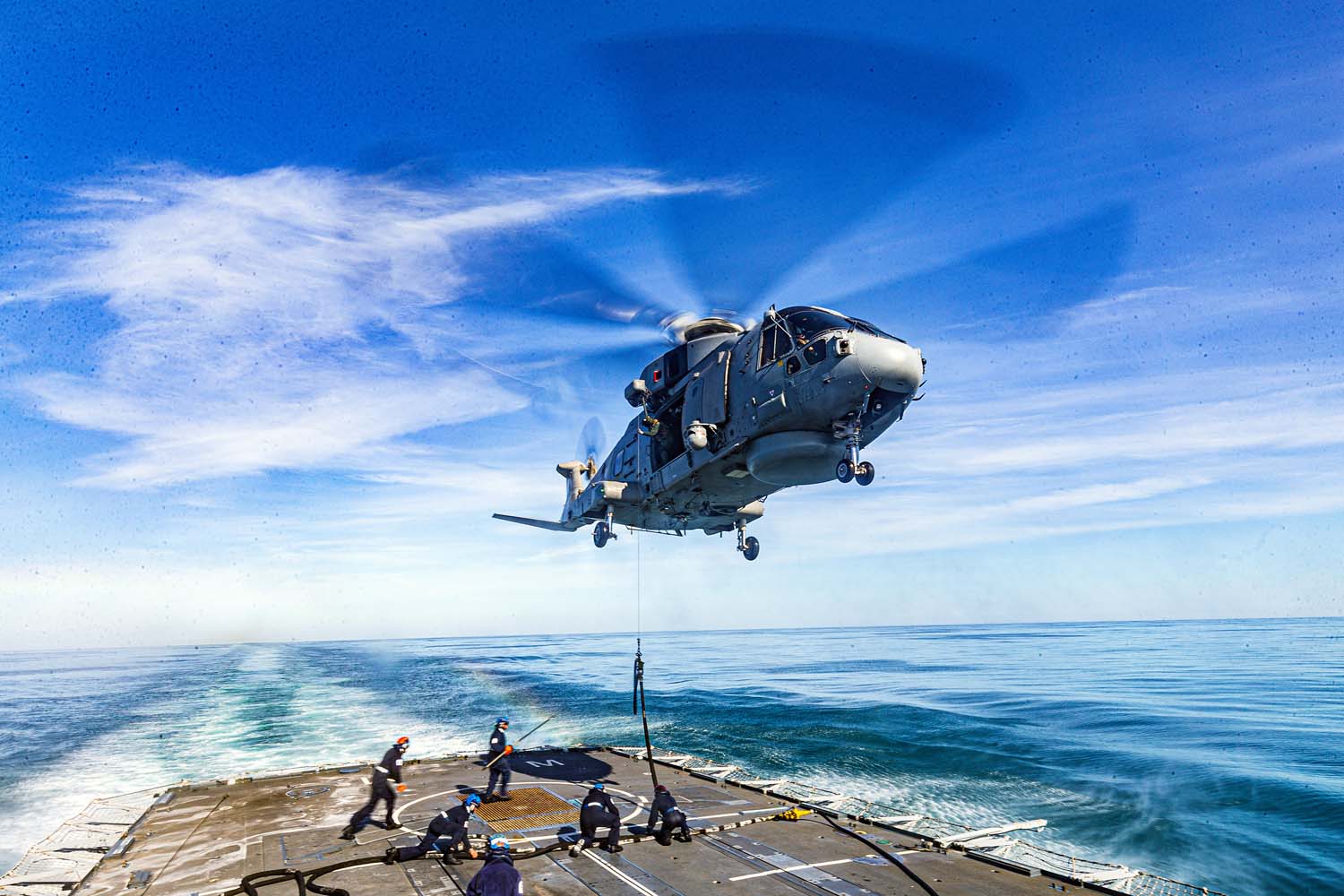Under the direction of Flight Deck Officer Petty Officer Amanda Drake, HMS Westminster refuelled her Merlin helicopter – without the 14½ tonne aircraft having to touch down on deck – to maintain the pressure on the ‘enemy below’. This is Helicopter In-Flight Refuelling, performed by the frigate’s flight deck team – who all have ‘day jobs’ aboard the Portsmouth-based warship, such as PO Drake who is Westminster’s senior police officer, and volunteer for the demanding job of ensuring helicopter operations (Merlin or the smaller Wildcat) are conducted safely.
The ship and helicopter are engaged in NATO’s Dynamic Mongoose anti-submarine exercise until the end of this week, alongside sister frigate HMS Kent (also based in Portsmouth), and another 814 Merlin Mk2, plus hunter-killer submarine HMS Trenchant and, for the first time, an RAF P-8 Poseidon maritime patrol aircraft. They’ve all gone through training and assessment at the RN School of Flight Deck Operations at RNAS Culdrose in Cornwall… which is also the home of 814 Naval Air Squadron’s Tungsten Flight, currently assigned to Westminster.

Anti-submarine warfare demands:
–state-of-the-art kit (tick)
–highly-trained men and women (tick)
–patience (tick)

HIFR allows the Merlin to top up without the rigmarole (and time) of landing on deck and shutting down. Merlin anti-submarine patrols can last several hours – and for a sustained hunt several helicopters operate in rotation around the clock to never give the underwater threat a breather. The helicopter uses around 800 kilogrammes of fuel every hour it’s airborne – but that can rise to one tonne of fuel for 60 minutes in the hover, when the helicopter has its dipping sonar lowered in the ocean as it closes in on its submarine foe.
That’s because in the hover it’s purely engine power keeping the weight of the aircraft in the air; forward flight creates aerodynamic lift which lowers the rate of fuel consumption. Refuelling isn’t quick – it depends on how good the ship’s pump pressure is; ideally, 1 to 1.2 tonnes should enter the Merlin’s tanks every hour (it can be as low as 800kg if the fuel pressure’s low).
It’s also exposed to the elements, the hose is heavy and above all there’s an almighty downwash from the helicopter; the refuelling team can be battered by wind speeds in excess of 200mph generated by Merlin in a hover. Dynamic Mongoose, which has been staged off the coast of Iceland and involved ships, submarines and air power from six Allied nations, ends on Friday having tested NATO’s ability to hunt diesel and nuclear-powered submarines in the cool waters of the High North.
















